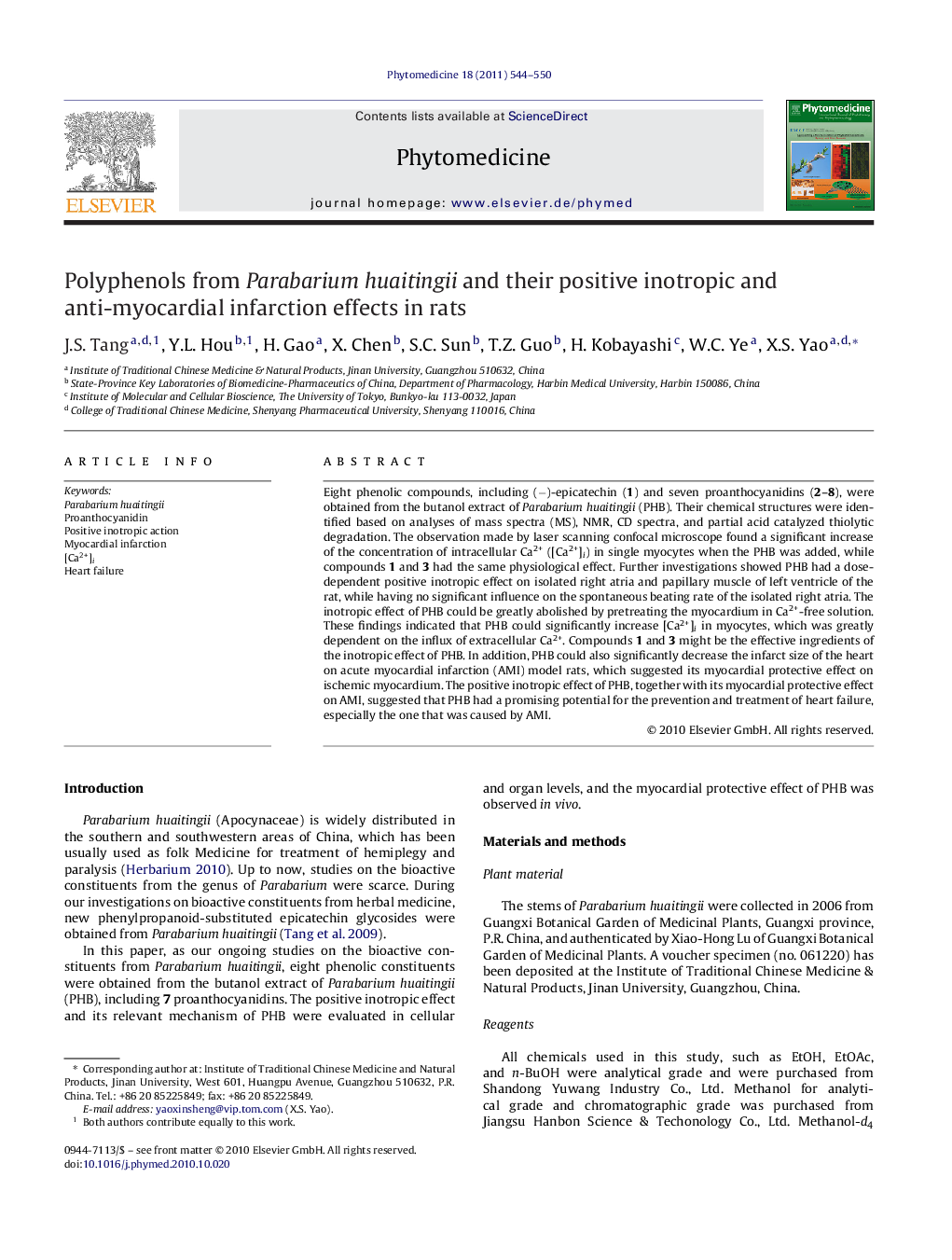| Article ID | Journal | Published Year | Pages | File Type |
|---|---|---|---|---|
| 5816959 | Phytomedicine | 2011 | 7 Pages |
Abstract
Eight phenolic compounds, including (â)-epicatechin (1) and seven proanthocyanidins (2-8), were obtained from the butanol extract of Parabarium huaitingii (PHB). Their chemical structures were identified based on analyses of mass spectra (MS), NMR, CD spectra, and partial acid catalyzed thiolytic degradation. The observation made by laser scanning confocal microscope found a significant increase of the concentration of intracellular Ca2+ ([Ca2+]i) in single myocytes when the PHB was added, while compounds 1 and 3 had the same physiological effect. Further investigations showed PHB had a dose-dependent positive inotropic effect on isolated right atria and papillary muscle of left ventricle of the rat, while having no significant influence on the spontaneous beating rate of the isolated right atria. The inotropic effect of PHB could be greatly abolished by pretreating the myocardium in Ca2+-free solution. These findings indicated that PHB could significantly increase [Ca2+]i in myocytes, which was greatly dependent on the influx of extracellular Ca2+. Compounds 1 and 3 might be the effective ingredients of the inotropic effect of PHB. In addition, PHB could also significantly decrease the infarct size of the heart on acute myocardial infarction (AMI) model rats, which suggested its myocardial protective effect on ischemic myocardium. The positive inotropic effect of PHB, together with its myocardial protective effect on AMI, suggested that PHB had a promising potential for the prevention and treatment of heart failure, especially the one that was caused by AMI.
Related Topics
Life Sciences
Biochemistry, Genetics and Molecular Biology
Clinical Biochemistry
Authors
J.S. Tang, Y.L. Hou, H. Gao, X. Chen, S.C. Sun, T.Z. Guo, H. Kobayashi, W.C. Ye, X.S. Yao,
